Meet Johnny Appleseed*
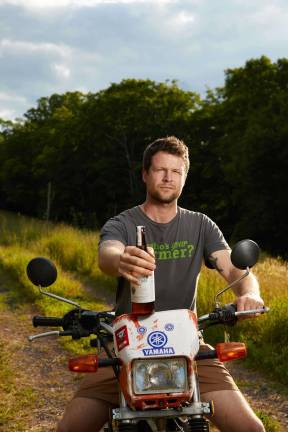
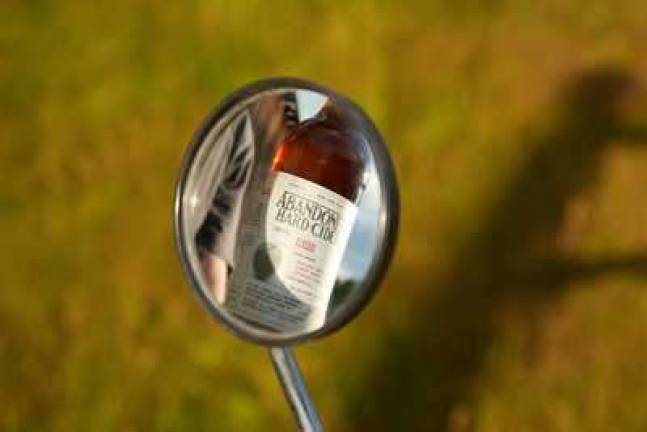
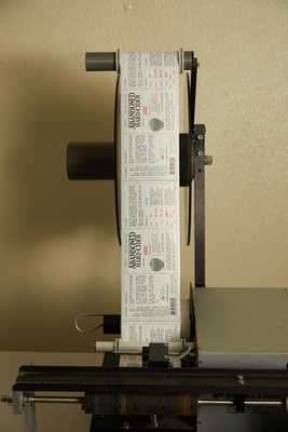
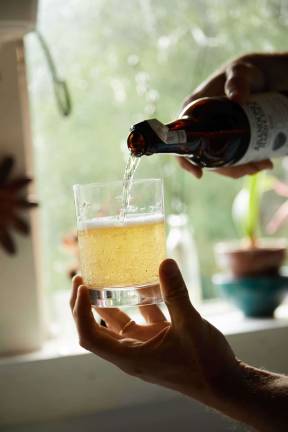
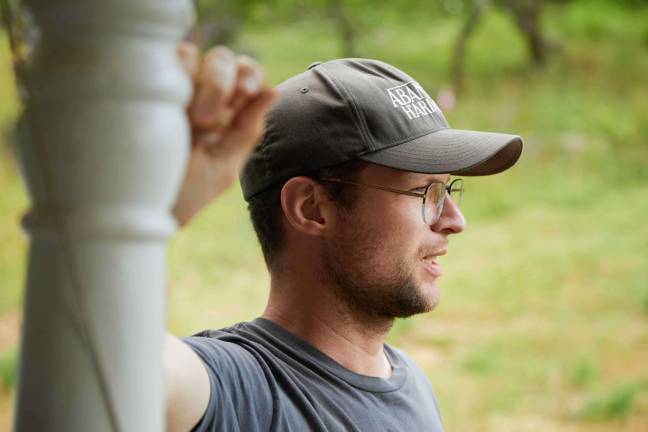
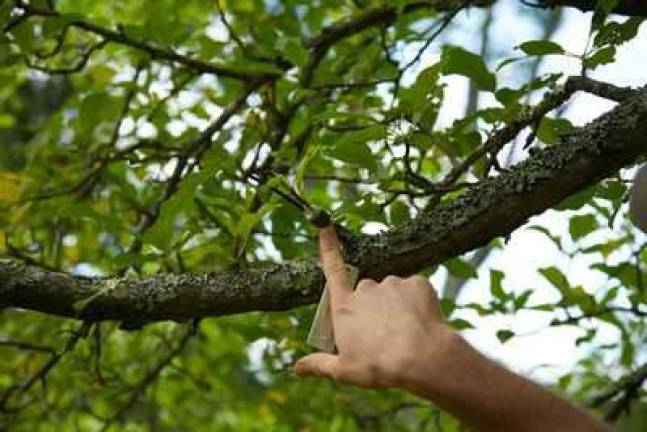
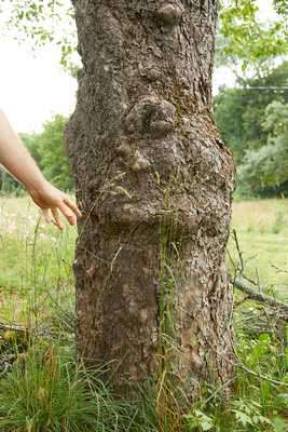
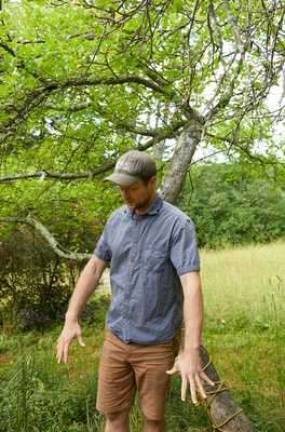
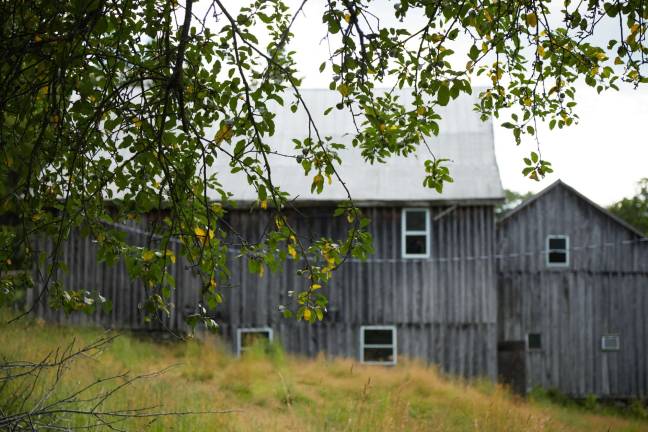
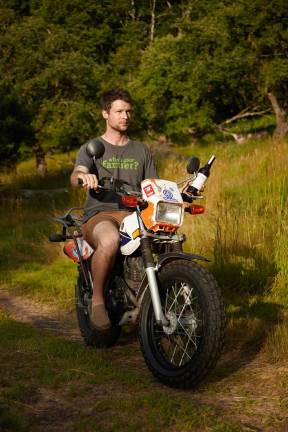
A love affair with the rare, odd, ugly and wild
By Becca Tucker
Photos by Michael Bloom
Martin Bernstein pulls into his rutted driveway on a Yamaha dirtbike and slides off his visored helmet. He says hello and heads into the kitchen, where he pries open a bottle of cider with the top of a chewing tobacco tin for us to try.
Bernstein and his wife Molly Marquand, who’s due with their second in two weeks, bought this rambling 1914 farmhouse five years ago. They loved the wide openness of their 110 acres, with bear and wild turkey, ancient apple trees and a hemlock barn that pre-dates the house. They raised chickens and ducks. Bernstein planted a hop field and Marquand, a botanist, put in a big vegetable garden. But with no daycare or family nearby, they found Sullivan County a virtually impossible place to raise a kid, so in April they moved across the river, along with their chickens and ducks, to “civilization.”
For now Bernstein, 32, splits his week between this old farmhouse in the forgotten Catskills hamlet of Parksville, NY and their new place in Germantown, population 2,000. When he’s with his wife and son, they AirBnB the farmhouse. A big pot of cold pasta is on the stove, presumably left for last night’s guests. Bernstein scoops some into a bowl and eats it standing up.
Germantown is on the border of Dutchess and Columbia counties, which is apple country, too, but “all very tamed,” said Bernstein. The wildness of the Catskills, the same characteristic that makes it a hard place to raise a family, is what proved to be a siren song for Bernstein.
As he pours a bottle of Abandoned Cider into a Mason jar, he studies the label. This is the 2017 classic – the inaugural year. Bernstein wrote the copy. He wanted the label to resemble Dr. Bronner’s, but his cousin out in Silicon Valley who designed it for him (in exchange for a stake in the company) said no way. By today’s standards, though, the word count is unthinkable. Bernstein was a creative writing major at Columbia before switching to economics, and this is his canvas. It’s his chance both to educate people on his favorite topic, and to convince potential customers that this is not some corporate masquerade, but a product of legitimate passion.
“Our headquarters is a 19th century barn on a 110 acre historic dairy farm in the heart of the Catskill Mountains. Old apple trees dot the edges of our fields and serve as the inspiration for this cidery,” the label reads in historic looking all-caps.
Indeed, a stone’s throw from the front porch grow a handful of gnarly apple trees. Some of them pre-date the farmhouse, like an Esopus Spitzenburg, a regional variety that was reportedly Thomas Jefferson’s favorite apple. (Bernstein learned a lot about the history of the place from Harry, the old man they bought the house from, who grew up here and recently died at 98.) Trees like these flower each spring all over the Catskills: along roads and stone walls, in the ruins of old homesteads and tanning mills. Un-tended by human hands, they have gone feral and come to bear ugly fruit with hard skin that’s not very tasty for eating. In other words: full of character.
Bernstein was born in Manhattan. He didn’t know any of this until the first fall in their new place five years ago, when the apples ripened. They tasted “like nothing you can buy in the store. So rich, so complex, so funky. Probably to some a little bit offensive,” said Bernstein. They were “not easy to eat apples.”
So he and a buddy from Poland decided to make vodka out of them. It “tasted like a hospital,” he said. “It probably had methanol in it.” But on the way to making vodka you first have to make cider, and the cider was surprisingly good.
“So I was like, why don’t we just make more cider?” recalled Bernstein. That’s what they did, using a repurposed garbage disposal and a jury-rigged carjack for an apple press. When Bernstein stopped into a fermentation shop to pick up some equipment, the shop owner, “fermentation guy” Eric Childs, offered to barter in exchange for some of Bernstein’s apple juice. Six weeks later, Childs reported that he had just made the best cider he’d ever tasted. Where had Bernstein gotten those apples? He wanted more.
By dumb luck, Bernstein had landed in what he now calls the Napa Valley of cider. There’s a growing community of apple geeks, orchardists and cider makers centered in the Catskills, and if they come off as a little snobby, they’re only half-joking. And why not? This undeveloped state park may not offer much in the way of daycare options or bustling downtowns, and the soil’s not great for farming, but it is rich in gnarly old apple trees whose roots run deep. Just as the best wines don’t come from table grapes, you don’t make a good cider from a McIntosh, Bernstein explained. Culinary apples will yield a cider that’s “just sweet and super boozy.” For a dry, crisp cider with that je ne sais quoi, you need to mix in some feral funk.
That winter, Childs proposed they start a company together. “I was like, cool, let’s do that,” said Bernstein. After two years of talking and planning, two harvest seasons of experimenting with different apple varieties, the pair got their license and Abandoned Cider became the first cidery in Sullivan County. Their production facility is the 1800s hemlock barn, retrofitted with seed money from Bernstein’s “methanol buddy.” It’s now insulated, with washable floors and walls, and an isolated cooling room where 1,500 gallons of cider sit in rows of giant vats and wooden barrels.
“Super legit,” Bernstein murmurs as he works, as if to remind himself, or pump himself up, or maybe just pinch himself. “Super f-ing legit.”
They know they have to upgrade, and they are working on fundraising for another space here in Sullivan County, one with floor drains, hot water and reliable electricity. “A barn from the 1800s is not ideal for an ambitious beverage company,” Bernstein said. But it got them through year one in romantic style.
For the first season they handled distribution themselves – to a few local restaurants, wine and liquor stores, cheese and wine shops and specialty grocery stores in the city. Since this is still a part-time job for both of them, that was a bit much, and they had just signed with a distributor. (Bernstein is also a part-time fundraiser for the Frost Valley YMCA.) The goal is for the company to support one of them full-time by the fall.
This spring, Bernstein planted 100 young trees on a north-facing slope, an old dairy pasture behind the hemlock barn. They were scions – or cuttings – that he and other wild apple geeks had foraged from the region. He grafted them onto semi-dwarf rootstock, so that they will grow into small, easily manageable trees, but bear the wild fruit only to be found in the Catskills. He used his dirt bike to lug a tank of organic neem oil to spray the young trees, to keep fungus and insects from taking hold.
The “Abandoned-no-more Orchard,” as Bernstein calls it, will serve as a genetic preserve and a one of a kind production orchard for their cider. He will let the grass grow long in his orchard for pollinators. He won’t irrigate. The trees will be allowed to boom one year and bust the next, as they naturally do. “The Classic 2018 will probably taste different from the Classic 2017, and we are okay with that,” he said. As the drinking public gets more sophisticated about cider, “people are going to appreciate that. They may even keep a 2017 bottle for an occasion.”
* “Not the, I’m a modern Johnny Applessed,” Bernstein demurs. “There’s like three others” around the Northeast who could equally lay claim to that title.